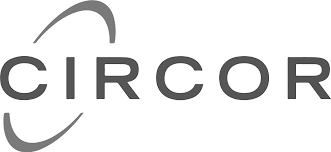Welcome to Your Startup HR Workbook
This guide is a quick‑read notebook for founders who need a solid HR reporting system — without hiring a specialist. Use it like a checklist, a cheat‑sheet, and a reference library.
1. Why a Monthly HR Report Matters for Startups
Track talent health, cost, and compliance in one place
- Visibility: See headcount trends, turnover, and hiring velocity at a glance.
- Cost control: Spot overtime spikes and salary imbalances before they erode cash flow.
- Compliance: Keep statutory metrics (e.g., hires vs. terminations) ready for audits.
All of this can be captured in a single, printable Excel dashboard that updates automatically.
2. Download the Free HR Monthly Report Template
What the template includes
- Headcount & attrition summary
- Salary & benefits cost breakdown
- Training hours & performance rating matrix
- Compliance checklist (EEO, payroll tax, etc.)
- One‑page visual dashboard with charts and KPIs
Grab the Free HR Monthly Report Excel Dashboard now and start populating it with your data.
3. Set Up the Dashboard in Minutes
Step‑by‑step quick‑start
- Open the downloaded workbook and enable macros (if prompted).
- Go to the “Data Input” sheet and paste your HR data (CSV export from your payroll system works best).
- The “Dashboard” sheet refreshes automatically – review headline numbers.
- Save the file as HR_Monthly_Report_YYYYMM.xlsx for version control.
Use the One‑Page Executive Excel Report Template to add a brief narrative for investors or board members.
4. Integrate HR Metrics with Your Startup Scorecard
Balanced Scorecard for People Operations
- Financial Perspective: HR cost per employee, overtime expense.
- Customer Perspective: Employee satisfaction (eNPS) linked to customer NPS.
- Internal Process: Time‑to‑fill, training completion rates.
- Learning & Growth: Skill‑gap analysis, certification coverage.
Download the Balanced Scorecard & Strategy Map Toolkit to map these HR KPIs alongside your financial and product metrics.
5. Automate Data Refresh with Simple Excel Tricks
Tips to keep the report up‑to‑date
- Connect the “Data Input” sheet to a live CSV export from your HRIS using
Data → Get Data → From Text/CSV. - Set a weekly Power Query refresh schedule (Excel → Query → Properties → Refresh every X minutes).
- Use conditional formatting to highlight turnover > 5% or overtime > 10 hrs/week.
For deeper automation, the Automated Excel Financials workbook shows how to pull data from multiple sources with a single button.
6. Industry‑Specific HR Dashboard Examples
Tech Startup
- Focus on engineering headcount growth, contractor-to‑full‑time conversion.
- Track equity grant vesting as a cost line item.
Retail / Service Business
- Emphasize scheduling efficiency, hourly labor cost versus sales.
- Include turnover rate for front‑line staff.
Copy the relevant sections of the template and hide the columns that don’t apply to your sector.
7. Quick‑Start Action Checklist
| Task | Resource | Done? |
|---|---|---|
| Download the free HR Monthly Report Excel Dashboard | HR Monthly Report Template | ☐ |
| Populate the Data Input sheet with payroll/HRIS export | Internal HR system CSV | ☐ |
| Generate the one‑page executive summary | One‑Page Executive Template | ☐ |
| Map HR KPIs to your Balanced Scorecard | Scorecard Toolkit | ☐ |
| Set up weekly Power Query refresh | Excel Power Query guide (built‑in) | ☐ |
Check each box daily for the first month. When all boxes are ticked, you have a reliable, automated HR reporting engine.
Ready to Supercharge Your HR Reporting?
Start today by downloading the free HR Monthly Report Excel Dashboard. Plug in your numbers, watch the charts update, and gain instant insight into your people‑operations health.






























